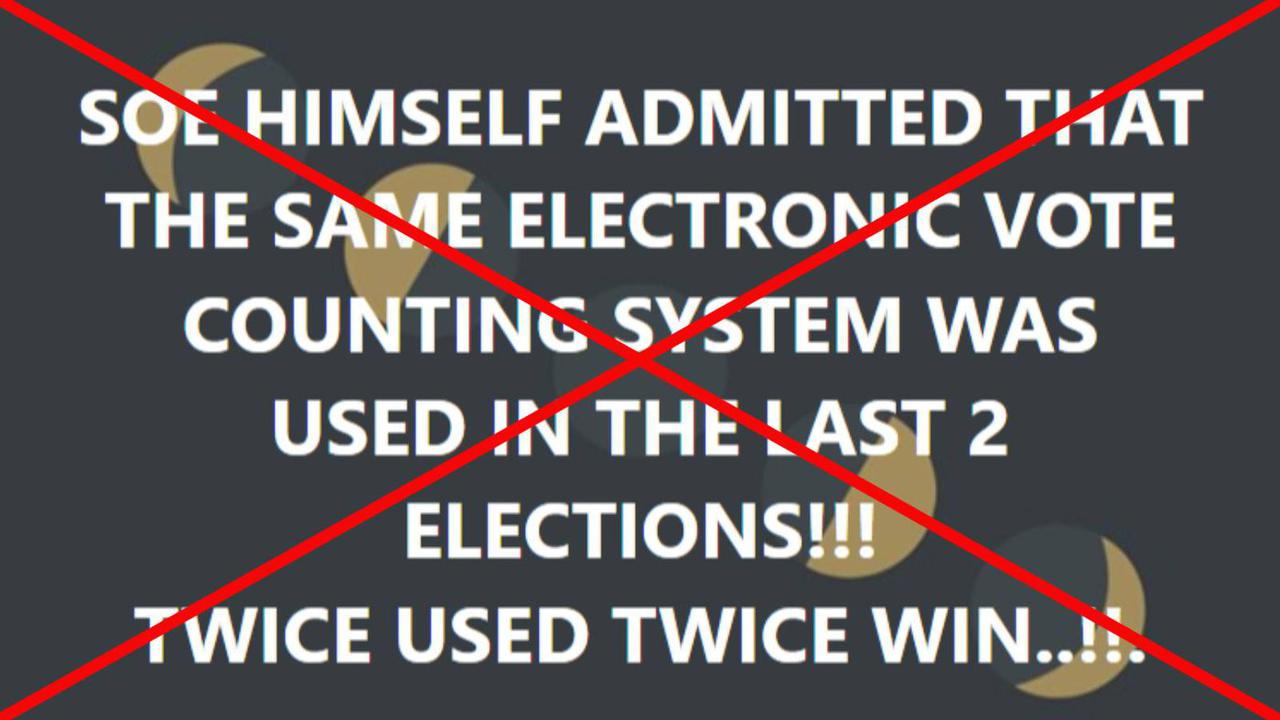WHAT WAS CLAIMED
An electronic vote counting system was used in the last two Fijian general elections.
OUR VERDICT
False. Ballots were counted by hand in 2014 and 2018. This will continue with Fiji's election on December 14.
A Facebook post claims that an electronic vote counting system was used in the last two Fijian general elections.
This is false. Ballots were counted manually in both the 2014 and 2018 elections. This will also be the case for the upcoming election on December 14, 2022.
The post (archived here), which was shared on November 29, reads: "SOE himself admitted that the same electronic vote counting system was used in the last 2 elections!!! Twice used twice win..!!."
"SOE" refers to the Fijian Elections Office's (FEO) Supervisor of Elections, Mohammed Saneem.
In an email to AAP FactCheck, Mr Saneem said that manual counting was used in the last two Fijian elections.

"It has been manual. We used pen and paper for voting purposes. Counting was done manually by our staff."
He also confirmed the same process will be used in the 2022 election.
Mr Saneem has previously explained that after votes are manually counted, the FEO receives results from individual polling stations through a results management system. This system uses locally developed software to deliver ballot data to the FEO either through phone calls or scanned results.
Jon Fraenkel, a professor of comparative politics at Victoria University of Wellington, told AAP FactCheck ballots were manually counted.
"The ballots are physically counted - as they were in 2014 and 2018 - and only thereafter entered into the electronic system," he said in an email.
"The electronic results management system is merely a method of communicating the results to the public."
Video footage from the 2018 election night was shared by the FEO and local news agencies, which shows manual vote counting in progress - see here, here and here.
Touch screen voting machines have previously been used in certain trade union elections in Fiji - see here, here and here - but not in general elections.
Prof Fraenkel noted that the convention of releasing "provisional results" - whereby polling results are released intermittently throughout election night - can generate scepticism about the counting process.

"This creates massive suspicions, as it did in 2014 and 2018, that ballot-rigging is occurring," he said. "It is pretty certain that they will do the same thing again because since the 2018 election that method has been placed into law via one of the many electoral amendment acts (p6)."
Prof Fraenkel also said that the interim statement issued by multinational observers, often before the official count has concluded, can encourage opposition parties to make allegations of electoral fraud.
"Both practices are, in my view, deeply destabilising but easily resolved if either the Fijian Elections Office (FEO) or the [multinational observers] behave sensibly."
The Facebook account behind the post has been flagged by the FEO's Centre for Credible Election Information for sharing misinformation about the electoral process.
AAP FactCheck has addressed other claims about the Fijian election here and here.
The Verdict
A claim that an electronic vote counting system was used in the past two Fijian general elections is false. The Fijian Elections Office and an independent expert confirmed that manual counting was used for the 2014 and 2018 polls.
Votes will also be counted by hand for the election on December 14.
False — The claim is inaccurate.
AAP FactCheck is an accredited member of the International Fact-Checking Network. To keep up with our latest fact checks, follow us on Facebook, Twitter and Instagram.












